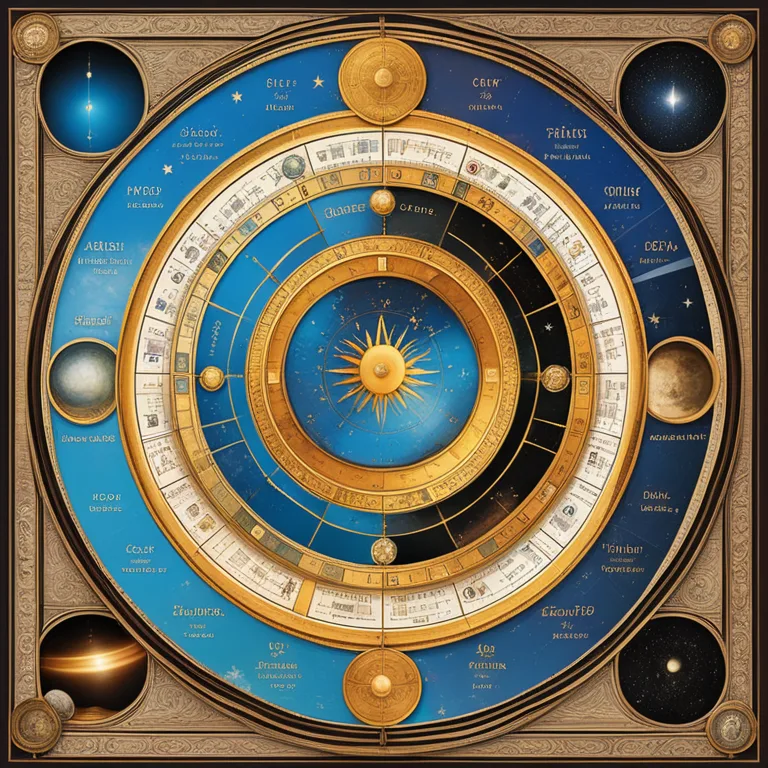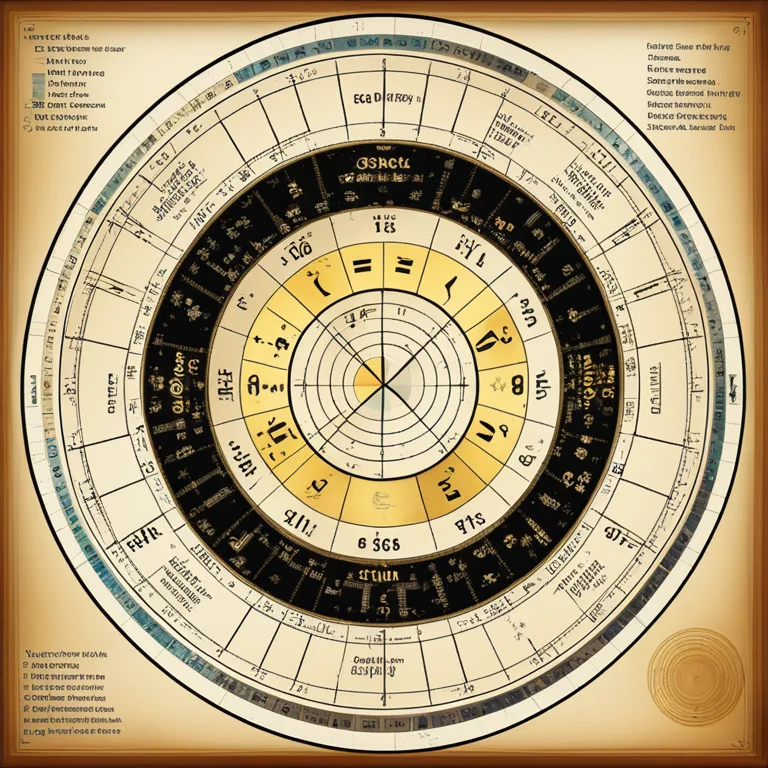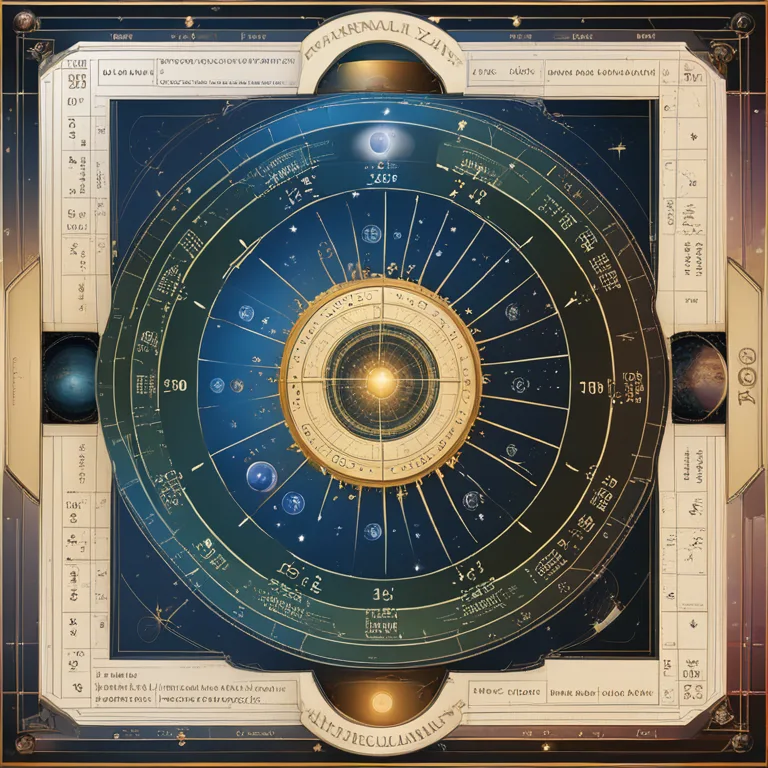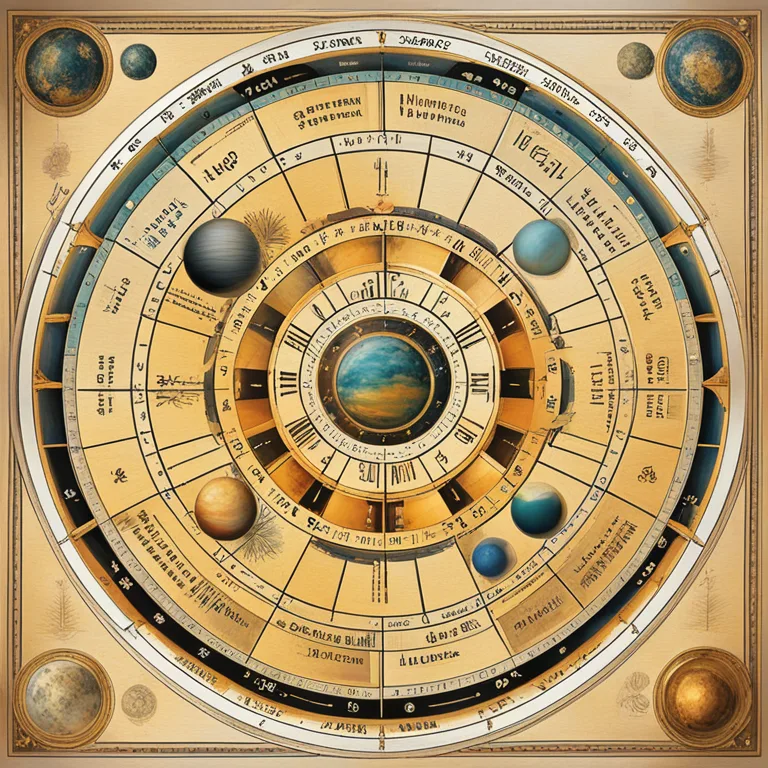
The Art of Birth Chart Calculation
Learn the precise method behind calculating astrological birth charts and the factors involved in chart creation.
article by Priya Deshmukh
Before delving into the mechanics of birth charts, it's essential to understand their significance. A birth chart, also known as a natal chart, is a snapshot of the celestial sky at the precise moment of an individual's birth. It is a personalized map that astrologers use to interpret one's personality traits, potential life events, and personal evolution. Calculating a birth chart is a mix of astronomy, mathematics, and intricate astrological knowledge, all of which come together to form a unique cosmological blueprint for each person.

Astrological birth charts hinge on three fundamental components: the positions of planets, the zodiac signs, and the houses. Each planet, including the sun and the moon, is positioned in one of the twelve zodiac signs and houses at the time of one's birth. The positions are determined by the exact time and geographical location of birth. Understanding the interplay between these elements offers insights into personality, life experiences, and growth opportunities.

The first step in calculating a birth chart is to pinpoint the positions of the planets. Modern astrologers use sophisticated software that applies NASA data for planetary movements. These programs account for various astronomical factors, such as planetary retrogrades, to calculate precise positions. The rising sign, or ascendant, is critical in this process and is determined by the zodiac sign on the eastern horizon at the time of birth, further emphasizing the importance of birth time accuracy.

Once planets are placed within the zodiac signs, the chart is subdivided into twelve houses. Each house corresponds to a specific area of life, from personal identity to career and beyond. The calculation of houses is based on either the Placidus, Koch, Equal House, or Whole Sign House system, with Placidus being the most commonly used as of 2024. The choice can vary based on personal preference or astrological tradition.

Aspects are the geometric angles between planets and significant points in the chart, reflecting their dynamic interrelationships. Major aspects include conjunctions, sextiles, squares, trines, and oppositions, each bearing unique implications. Aspects can intensify or ease the expressions of the involved planets, contributing to the complexity and depth of the natal chart interpretation.
The accuracy of a birth chart is directly tied to the precision of the birth time. Even a minor discrepancy can shift the ascendant and house placements, altering the overall interpretation. That's why many turn to rectification, a process to fine-tune birth times using significant life events. Astrological software continues to advance, incorporating rectification tools and constantly updating astronomical data to deliver dependable birth chart calculations for both enthusiasts and professional astrologers.
Birth chart calculation is a fascinating blend of ancient tradition and modern technology that allows us to unlock the celestial influences on our lives. By weaving together the moment of birth with the timeless dance of the cosmos, these charts serve as a guide to personal growth and understanding. Whether you're new to astrology or a seasoned practitioner, grasping the intricate process of birth chart calculation can deepen your appreciation for this profound discipline.
Published: 12/22/2023
Modified: 12/22/2023
More predictions
Come back here soon to learn more about yourself and your future


Astrological Houses: A Comprehensive Guide
Discover the fundamental roles of astrological houses and how they influence your personal horoscope and astrology readings.


The Lead Role of Astrological Houses
Gain insights into how the astrological houses influence your personal horoscope and shape your celestial journey.


Astrological Houses & Their Role In Modern Life
Delve into the significance of the 12 astrological houses and their influence on personal astrology.